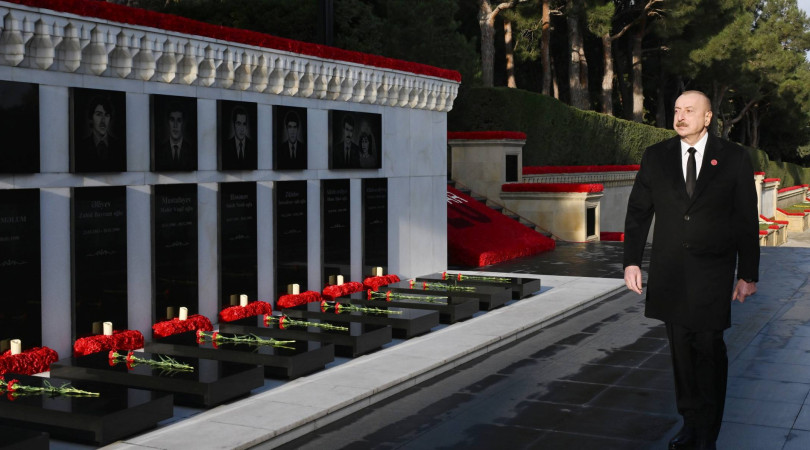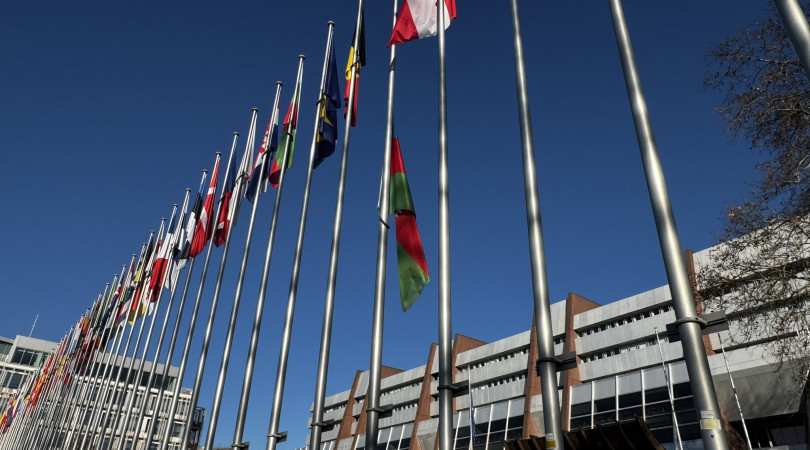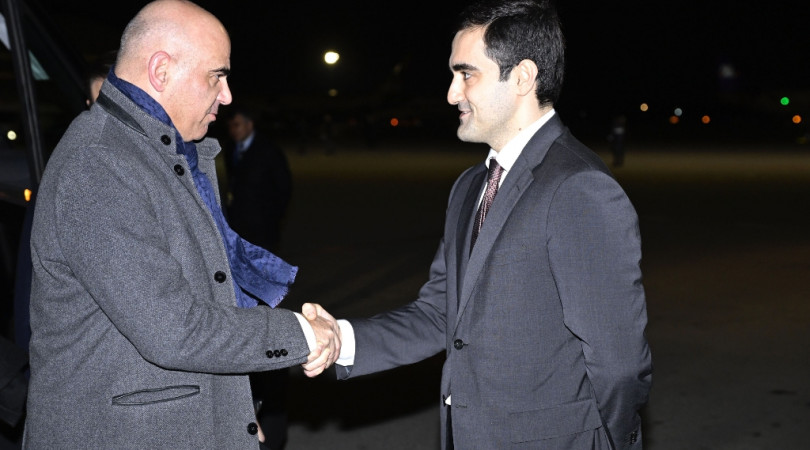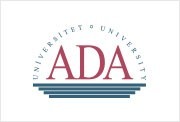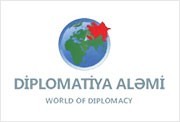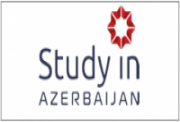CRIMES COMMITTED AGAINST AZERBAIJANI PEOPLE IN GUBA IN 1918 REPRESENT BLOODY PAGES OF GENOCIDE, ETHNIC CLEANSING AND AGGRESSION POLICY CONDUCTED BY ARMENIAN NATIONALISTS AGAINST OUR NATION FOR CENTURIES
Baku, April 23 (AZERTAC). According to information from the Press Service of the Office of General Prosecutor of Azerbaijan, the genocide, aggression and deportation policy of Armenian nationalists that has been purposefully conducted against the Azerbaijani nation in recent centuries constitutes painful stages of our history full of tragedies and bloody events. During this period, our native lands have been occupied, with hundreds of thousands of our countrymen killed with extreme cruelty. They have been driven away from their lands; our cultural monuments have been savagely crushed and destroyed. As an example, proving the continuance of this criminal policy, we can indicate that in the 20th century alone the Azerbaijan people were exposed to four acts of brutality and ethnic cleansing by Armenian nationalists – 1905-1907, 1918-1920, 1948-1953, and 1988-1993. The acts of genocide committed against the Azerbaijani population in the 20th century were especially cruel in Baku, Shamakhi, Guba, Garabagh, Zangazur, Nakhchivan, Lankaran and other regions of Azerbaijan.
The first attempt to give a political evaluation to such illegal actions as the genocide and ethnic cleansing policy against the Azerbaijani people and the purposeful occupation of our lands was made by Azerbaijan Democratic Republic in 1918-1920. However, the collapse of the Azerbaijan Democratic Republic did not allow to complete the measure.
The state-level political evaluation of the criminal acts of Armenians against the Azeri people was given only by the Decree of the national leader Heydar Aliyev “On the genocide of Azerbaijanis” dated 26 March, 1998. The Decree of the great leader Heydar Aliyev “On the mass deportation of Azerbaijanis from historical ethnic lands in the territory of Armenian SSR in 1948-1953” dated 18 December, 1997, has a significant importance in terms of carrying out an in depth analysis of the deportation of Azerbaijanis from the territory of Armenian SSR, making the legal and political evaluation of this crime and raising the international community`s awareness of it.
These documents, based on the actual historical facts, caused a significant change in Azerbaijan public opinion, laid the foundations of new insights into this issue in history and political science, and created conditions for more intensive scientific research and archaeological excavations in different regions in order to study these bloody pages of our history in more detail and in order to reveal the real roots of the ethnic cleansing policy of Armenians against Azerbaijanis. The decree “On the genocide of Azerbaijanis” proved, with historical facts, the disintegration of the Azeri nation by the Gulustan and Turkmenchay treaties that were signed in 1813 and 1828, which laid the grounds for the division of our historical lands and created the condition for the mass migration of Armenians to Azerbaijan and resulting in the suppression of the local Azeri population from their lands accompanied with genocide; the decree also revealed the essence of the policies conducted by Tsarist Russia and the totalitarian Soviet regime.
At the same time, the Decree announced 31 March as the Day of the Genocide of Azerbaijanis, and also recommended arranging a special session of the Milli Majlis of Azerbaijan Republic to commemorate these events. The Decree also defined “the duty of the Azerbaijan Republic to give political evaluation to the genocide events” as “the dictate of the history”.
The Declaration adopted on 30 March 2001 as a result of the discussions of this issue in Milli Majlis of the Azerbaijan Republic addressed the international organisations, parliaments, and governments of the world’s countries in order to achieve the recognition of the genocide crimes against the Azerbaijani people for centuries, the establishment of efficient international legal mechanisms, and the resolution of the Armenian-Azerbaijan Nagorno-Karabakh conflict on the basis of international legal norms and principles of the Minsk group of OSCE for preventing any further genocide crimes against Azerbaijanis.
The historical importance of the newly revealed facts of the especially cruel crimes of the Armenian nationalists against Azerbaijanis in the Guba region must be emphasized. Thus, the mass human cemetery full of bones belonging to various aged and gendered groups was revealed during the building and reconstruction work preformed in the Guba city stadium on 5 April 2007.
In connection with this, representatives of the Azerbaijan Republic General Prosecution Office, the Ministry of National Security, the Institute of Archaeology and Ethnography of National Academy of Sciences, Forensic Medical Examination and Pathologic Anatomy Unit of the Ministry of Health were dispatched to the Guba region and the progress of the work and preliminary results were discussed in a special conference held on 19 April 2007 with the participation of the General Prosecutor of the Republic Azerbaijan.
Based on the preliminary results, the respective specialists reached a conclusion that these people were killed with cruelty and the crime was conducted a long time ago, as the bones revealed in the mass graveyard were collocated disorderly on each other and had numerous wounds, the bodies were buried in mass in the wells at a depth of 4 metres, the corpses were completely decomposed and the bones were fragile.
At the same time, the local people passed on the information that they had received from parents and elderly relatives describing the people who were killed by an Armenian punitive detachment that attacked Guba in May 1918 and that they were buried in this area.
Considering the special historical importance of the researched facts and the volume of future work, the General Prosecutor`s Office addressed the Institute of Archaeology and Ethnography of National Academy of Sciences for the performance of archaeological research in the areas of discovery of human skeletons and raised a question in the Cabinet of Ministers of Azerbaijan Republic to provide the Forensic Medical Examination and Pathologic Anatomy Unit of the Ministry of Health with all the required modern technical equipment in order to enable them to perform complex forensic examinations.
In connection with the discovery of the mass grave, the office of prosecutor of the Guba region examined the crime scene and revealed numerous human skeletons, skulls, legs, hips, ribs, limbs and other parts piled up disorderly in the 4 metre-deep and 7 metre-wide wells, and the samples taken from the wells were sent for forensic examination and the experts were given the task to identify the age, gender, height, race, time of death, the damage suffered by wounds and the case of mass poisoning, as well as other peculiarities of the crime.
In addition, they were given the task to interview the relatives of the victims of the said events, to send enquiries to the National Archive Department of Azerbaijan Republic, Central Archive of the Ministry of Justice and the Institute of Soil Sciences and Agro-chemistry of National Academy of Sciences was instructed to analyse and define the parameters, chemical composition and classification and submit the results to forensic experts.
At the same time, with the researches of the Office of the General Prosecutor of Azerbaijan Republic with regard to the discovery of the mass grave in Guba city, the criminal cases opened by the Emergency Investigation Commission established by the Azerbaijan Democratic Republic in 1918 with regard to the mass murder of the peaceful Muslim population, arson of the entire villages, residential houses, mosques, and public houses, numerous facts of rape and other facts of brutality, the materials presently kept in the National Archive, the criminal legislation procedures of that period – so-called “Уголовное Уложение” (Criminal Code) - and other related archive materials were thoroughly studied, the witnesses were interviewed, a number of historically important documents were collected.
As a result of the studies of the criminal cases, it was identified that the Minister of Foreign Affairs of the Azerbaijan Democratic Republic, M. Hajinski, addressed the Azerbaijan Government on 15 July 1918 stating that for a period of four months different parts of Azerbaijan were torn by brigands who under the name of the Bolsheviks, irresponsible Armenian military units, etc. committed awful brutal acts on the civilian Muslim population, at the same time the general public in Europe is tuned to the completely opposite opinion. He suggested to establish a commission that would accurately register all the cases of brutality, identify the circumstances of such violence, and determine the perpetrators and severity of the actual damage and to publish the results of the work of the Commission in all the main European languages (Russian, French, and German as well as in Turkish) and widely disseminate it.
In accordance with the decision of F. Khoyskiy, the deputy Minister of Foreign Affairs of the Azerbaijan Democratic Republic dated 31 August 1918, the Emergency Investigation Commission, under the supervision of Alakbar bey Khasmammadov, consisting of members of the Ganja District Court Ismayil bey Shamkhaliyev and Andrey Fomich Novatskiy, the procurator Nasraddin bey Safikurdskiy, Nikolay Mikhaylovitch Mikhaylov, V. Gudvillo and Mirza Javad Akhundzade.
In April and May of 1918, a member of the Emergency Investigation Commission, Andrey Fomich Novatskiy, investigated the cases of mass murder of the Muslim inhabitants of Guba city and of the villages in the Guba district, robbery of their property, arson of the houses, and other cases of brutality. As it is seen from the report attached to the case materials that was compiled by A. Novatski and addressed to the chairman of the commission, in April 1918, a member of Bolshevik party David Gelovani arrived in Guba with a troop of 187 armed soldiers and announced the establishment of the Soviet regime. This army that had to leave the town and return to Baku as a result of an armed resistance took the Christian population with them. Approximately two weeks after these events the population heard that a big armed gang was on its way to Guba. Some of the inhabitants ran to the mountains and forests leaving their houses and property behind, but most of the people stayed in the town thinking that they were safe.
It was proven, by the case that the armed punitive gang, consisting of Armenians under the command of Amazasp – the former officer of the Russian Army, born in Van city in 1873, a member of the dashnaksutyun party and Armenian National Council in Baku, a well-known dashnaksakan, the commander of the Armenian military army, famous for his cruelty – and his aid Nikolay left to Guba by train at the end of April.
On the way to Guba, the punitive army attacked the Azeri villages on both sides of the railway, burnt the houses, and mercilessly killed the villagers that could not escape in time. They even killed the delegates carrying white flags that were sent by the villagers for negotiations and destroyed the villages. Thus, in Alijanli society, the Armenians killed the elderly who came for negotiations – Mirza Mahammad Dadash oglu and Gul Huseyn Maharram oglu, murdered the entire delegation consisting of 15 elderly representatives of Davachi-Bazar and Gizil-Burun villages of Davachi society sent for negotiations, attacked the villages and burned the mosques and Holy Koran books.
On the morning of 1 May 1918, the punitive army of Amazasp besieged Guba city and cut the town down with artillery guns, machineguns, and other weapons, then entered the town without meeting any resistance and committed brutal actions against the Muslims. Using guns and swords they murdered everybody that they met in the streets, including children and women, broke into houses and murdered entire families, cut the heads of children, raped and killed women and girls, robbed the property and burned the houses and mosques.
Thus, the entire family (14 persons) of Karbalayi Mammad Taghi oglu was murdered, Mammad Rasul oglu was killed and the abdomen of his wife was cut, the heads of his three children were cut off, Haci Dadash Bala-Gasim oglu, his wife Mashadi Bibi-Khanum and his son Abdul Gasim were burned alive in the house, two daughters – Hokuma and Busta – of Karbalayi Abzer were cut into pieces in the hands of their mother, Mashadi Gambar Molla Mahammad Salah oglu, his wife and several underage children, Molla Shahbaz, Mahammad Rasul Bayram oglu, Rasul Kazim oglu, Abdul Tulugchu oglu, Mashadi Musa Zeynal, Masahdi Ali Mashadi Feyzulla oglu, Karbalayi Dadash Baghir oglu, Jabbar Mammad Ali oglu, Sahib Safarali Mashadi Talib oglu, Mashadi Musa Zeynal and others were killed.
The elderly Ali Pasha Karbalayi Maharram oglu and his son were killed (they first blinded and then cut the stomach of the son in front of his father) for refusing to bring muslim women to please Armenians.
More than 2,000 men, women, and children were murdered, more than 100 girls and women were raped, 105 residential houses were burnt, and 4 million roubles in cash and gold, and valuables in the amount of 4.5 million roubles were robbed, as well asthe food and other goods at a cost of 25 million roubles were taken during this mass murder in Guba; with the damage totalling 100 million roubles; 105 residential houses belonging to Guba inhabitants Ibrahim Bey Shikhlarskiy, Mashadi Ali Huseynov, Oruj Ali Ahmadov, Bakir Mehraliyev, Sattar Mammadyarov, Hidayat Amirbayov, Ali Bey Zizikskiy, Rajab Orujov, Yusif Bey Abusalambayov and other Azerbaijanis, as well as public buildings were burnt down.
The punitive army under the command of Amazasp destroyed and burnt 122 Muslim village in Guba district including Davachi, Saadan, Charkhane, Zaglijan, Alikhanli, Eyni Bulag, Arab Al-Mammad, Agasibayli, Kolani, Arab-Hama, Tagay, Nardaran, Siyazan, Rahimli, Surra and others; 60 men, women and children were killed, 53 were wounded, and the cost of total damage resulting from the destruction of houses, buildings, public facilities, stolen property, and cattle was 58,121,059 roubles.
At the same time, more than 700 people were killed, more than 50 wounded, 700 driven away from their houses and died from illnesses and hunger in Davachi, Mushkur, Gusar, Rustov, 5th Fatihbey zones of Guba district, the amount of the loss caused by the destruction of the houses and other buildings and facilities, theft of property and cattle was estimated at more than 200 million roubles in the Davachi and Mushkur zones and even more for Gusar, Rustov, and 5th Fatihbey zones.
As it is seen from the testimony of the member of Bolshevik party David Gelovani to the Emergency Investigation Commission, the punitive army under the command of Amazasp was sent to Guba directly by Stepan Shaumyan without informing or consent of other commissars, and the composition of the army consisting of 2,000 soldiers was selected directly by the minister of defence Karganov. Amazasp addressing the Guba inhabitants called himself the hero and protector of the Armenian nation and informed them that his objective was not the establishment of the Soviet regime in Guba, but revenge and that he had received an order to destroy all the Muslim houses from the shores of the Caspian Sea to Shahdagh Mountain as it was done in the Shamakhi region.
The member of the Emergency Investigation Commission based on the collected evidence decided to start the proceeding against Amazasp and the members of the armed troops and other related persons pursuant to Articles 13, 129, 927, 1633, 1634, 1453, and 1607 of the Criminal Code (Уголовное Уложение) of that period, to annul the criminal proceeding against Shaumyan and Karganov due to their death; during these investigations the Commission visited and inspected the crime scenes, interviewed the witnesses, compiled a list of victims with an indication of the amount of the total loss, and adopted the required criminal and procedural decisions.
In November 1919, the Emergency Investigation Commission, based on the evidence collected during the investigation, issued a guilty verdict to Amazasp, Nikolay, Commissar Venuns, the inhabitants of Guba city Arutyun Ayrapetov, barber Javad Arutyunov, Avakov, the son of fisherman Avakov, students Amirjanovs, merchant Mirza Amirchanov himself and his nephews, shop owner Malikov, Vartan the son of Grigoriy, and other Armenians in accordance with Articles 13, 129, 922, 927, 1633, 1634, 1453, and 1607 of the Criminal Code then in force.
On 9 February 1920 in honour and recognition of the independence of the Azerbaijan Republic, the Azerbaijan Parliament adopted the Act of Oblivion releasing from punishment and persecution for crimes based on race hatred (hate crimes). On 16 October 1920, the Emergency Investigation Commission reviewed the criminal cases and, considering that the said events were based on race hatred as per the Act dated 9 February 1920, decided to close the case and forward the criminal case consisting of 3 volumes to Guba city and the district court of Important Cases for termination. The said court having reviewed the case and based on the Act of Azerbaijan Parliament dated 9 February 1920 issued the verdict to close the case as of 16 January 1921 and to be sent to archive.
The investigations performed by the Office of General Prosecutor of the Azerbaijan Republic and the interview of local inhabitants, including the direct witnesses in the Siyazan, Shabran, Guba, Khachmaz and Gusar district have once more proved the destruction and arson of Azerbaijan villages, the brutal murder of Azerbaijanis and other grave crimes committed by Armenian nationalists in these regions in March and April of 1918.
The representative of the Girmizi Tapa administrative unit of Guba District Executive Committee, Isacov Pisah Davidovich, submitted a list of 104 mountain Jews, including 18 Jews from the Girmizi settlement who were killed by Armenians during the mass murder and massacre in different districts of Azerbaijan in 1918.
The report submitted by the Institute of Archaeology and Ethnography of National Academy of Science of Azerbaijan indicated the discovery of another well and traces of two ditches filled with human bones during the archaeological excavations performed on a 494 square-metre zone in connection with the discovery of the mass grave in Guba city; the report identified that the newly discovered bones were also disorderly piled in the wells and ditches, traces of wounds on the bones and an absence of any clothing indicated brutal and cruel murder and the subsequent burial of these victims; the mass grave was found to be in connection with the act of genocide by the Armenian nationalists against the local population, in which the total number of the innocent people buried in this graveyard was approximately 600.
The opinion of the Forensic Medical Examination and Pathologic Anatomy Unit of the Ministry of Health based on a complex forensic, medical, legal (trace evidence), criminal anthropology, criminal biology, criminal chemical, and criminal histological examination indicated numerous life threatening wounds, the absence of life threatening illnesses, the burial of victims in a manner violating the normal burial procedures and the moral and human norms, the traces of torture that the victims (children, women, men, and elderly) endured while alive.
Out of 6,128 skeleton bones and bone fragments examined by forensics 6,082 belonged to humans, these were the fragments of skulls, collarbones, humeri, elbows, radial bone, breastbones, ribs, pelvis, thigh, fibula, shinbone, shoulder blades, femurs, hands and fingers and other parts; these were the bones of at least 147 persons (individuals), 6 of them being children, 14 women and 127 men; with the following age groups: two 1-3 years old; four – age of 13-16; 58 – age of 17-21; 42 – age of 22-35; 30 – age of 36-60; 9 – age of 61-74 and 2 – age of 75-90. The racial indications of the bones were of Azerbaijanis conforming to the local anthropological version of the South European race, with rare cases of osteoporosis and spondylitis and other locomotor apparatus illnesses, the period of burial was approx. 90 years old and conformed to the period of investigation, i.e. 1918; the traces of numerous traumatic wounds were observed in the wounds, i.e. puncture wounds, stab wounds, laceration wounds on the skulls, and on the bones wounds caused by wide blunt instruments with a limited surface area were all observed in addition to puncture, stab, and laceration wounds; most of the wounds were incompatible with normal life, being the direct cause of death of the said victims, while no traces of poisonous or other substances or illnesses were observed that may cause death.
Restoration of historical reality, informing the world society about the cruel nature of aggressive and ethnic cleansing policy against our nation, the suffering of our people, the appropriate political and legal evaluation of the numerous grave crimes conducted by Armenian nationalists for centuries that have been aimed at the elimination of Azerbaijanis as a nation is a very significant task in order to fulfil our obligation to the spirits of tortured fellow countrymen.
The establishment of a “Genocide memorial complex” in Guba city as per the Decree of Azerbaijan President Ilham Aliyev dated 30 December 2009 that is aimed at the dissemination of the fact of the criminal actions of Armenian nationalists to the international society, protection of national memory and the immortalisation of the memories of the genocide victims is a worthy measure that was taken by the state in this direction.
The case materials consisting of 3 volumes collected during the investigations of the Emergency Investigation Commission and held in the National Archive of Azerbaijan Republic is translated into the Azerbaijan, Russian, and English languages and one copy is given to the Heydar Aliyev Fund, which is playing an important role in the investigation of these issues and the dissemination of information to the public and international society in order to be used by the “Genocide Memorial Complex”.
The assistance of the Azerbaijan Republic Milli Majlis was requested in recognition of the ethnic cleansing policy against the Azerbaijani people and the acceptance of the aggressive nature, application of correct political evaluation, and the acknowledgement of the act of genocide and the crimes committed by the special punitive detachment in the Guba region in 1918.
The case materials and other historical documents collected by the Emergency Investigation Commission of the Azerbaijan Democratic Republic on the crimes committed against our fellow countrymen and their mass and brutal murder and other grave cruelties of 1918 in the Guba region can play an important role in the proper explanation of the genocide and real nature of the aggression policy against our nation.

